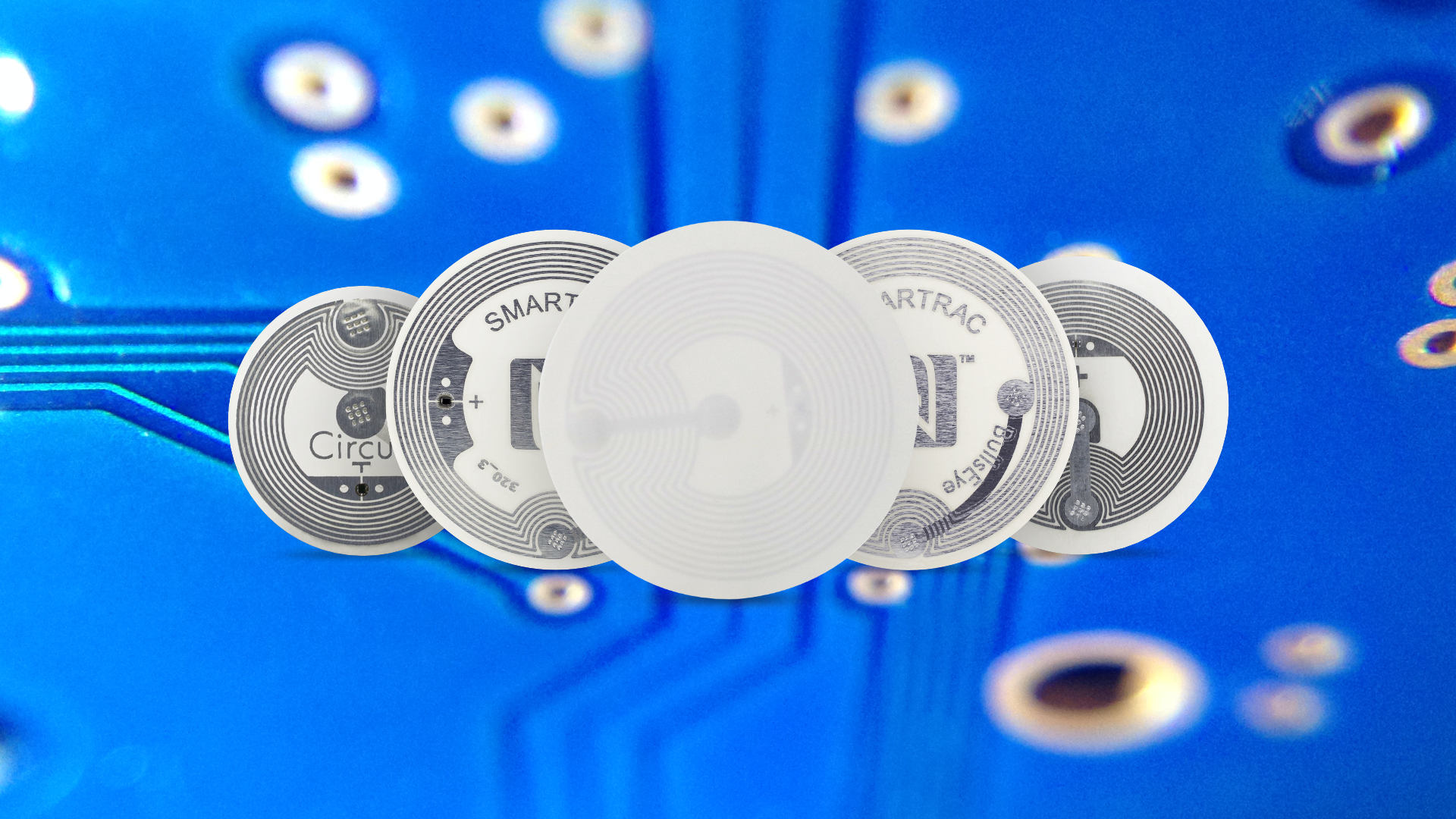Find the right NFC chip

Especially when buying NFC tags for the first time, it is often difficult to decide on a product. At first glance, many products look the same, but differences regarding the NFC chip used are revealed in the product description at the latest. The NFC chip, such as the NXP NTAG213, refers to the integrated electronic circuit that provides NFC functionality to the NFC product (e.g., NFC sticker, key fob or card). In this article, we will give a summary overview of the most common NFC chips, and then introduce the NXP NTAG series in more detail, as it is the most suitable for common use cases. Finally, a table of application examples will support the choice of the right memory size.
Overview NFC chips
The NFC function is based on numerous technical standards (such as ISO/IEC 14443) which, among other things, specify the communication with and organization of content for NFC chips down to the last detail. For those technically interested, we provide an overview of technical NFC standards here. At this point, it is only relevant that basically all chips that adhere to these standards are suitable for use in NFC tags. In our range you will therefore find NFC tags with the NFC chips MIFARE DESFire, MIFARE Classic, ICODE SLIX or NXP NTAG, among others, which we go into in detail in our comprehensive NFC chip overview. At this point, the big challenge now is to find the right chip from the range for your own NFC use case. It is often not possible to give a blanket answer to this question, which is why a narrowing down to the most commonly used chips for everyday NFC applications will be addressed here: The NXP NTAG series.
The NTAG series from NXP
NTAG 213, 215 and 216 are among the best-selling chips from the market-leading manufacturer NXP. They can be used with all NFC-capable devices and differ mainly in terms of the memory capacity available. The storage capacity of an NFC chip is specified in bytes, a unit from information technology. This can (simplified) be equated with the number of available characters, since a keyboard character usually requires one byte for storage. However, two values are always found in the product descriptions: For example, the NXP NTAG213 is described with 180 bytes (137 bytes NDEF). Primarily the memory space after NDEF formatting is important for use, since only this space can actually be used. The other memory is occupied by the serial number or additional chip functions, among other things. Within the NTAG series, the NTAG 213 has the least memory space with 180 bytes (NDEF: 137 bytes) and is therefore the cost-effective variant. The NTAG 216 has the most memory with 924 bytes (NDEF: 868 bytes) and is therefore the most expensive. The NTAG 215 with 540 bytes (NDEF: 480 bytes) is in the midfield both in terms of memory capacity and price. So before buying an NFC tag, you should know approximately what you want to use the NFC chip for later. In this way, it can be ensured that enough memory is available for the desired application. With this knowledge and the principle of "as little as possible, as much as necessary"; the acquisition costs can thus be kept low.
Find the right NFC chip - Explained in short video
Certain use cases explained for nfc chips
In the following table we give some application examples and the NXP NTAG chip recommended for them, to make it easier to select the chip for your own application. The required memory space can also be calculated practically with NXP TagWriter for Android, our NFC21-Tools for iOS or the NFC21-Writer for Windows. In our collection of nfc tutorials you will find numerous practical examples for your own implementation.
| Use case | Example | Memory and NDEF Data | Recommended Chip |
| Simple Text | Hello NFC21 | 18 Byte | NXP NTAG213 |
| Website | www.nfc-tag-shop.de | 20 Byte | NXP NTAG213 |
| Send a SMS | Title:Favourite Person Number: 01721234567 Text: Hello, I come home in 10 minutes. Your Mustermann |
114 Byte |
NXP NTAG213 |
| Telephone Number | Title: Max Mustermann Number: 01721234567 |
42 Bytes |
NXP NTAG213 |
| Changing smartphone settings | e.g. Bluetooth on/off, Wifi on/off |
83 Bytes (depends on app) |
NXP NTAG213 |
| Sending an e-mail |
Title: General e-mail |
181 Byte |
NXP NTAG215 |
| Amiibo safety copy |
Safety copy of an existing Nintendo amiibo figure |
480 Byte |
NXP NTAG215 |
| Business card |
Title: Doctor |
329 Byte |
NXP NTAG216 |
Tip: Our NFC starter kits put together multiple chip types in affordable packages for an ideal start.
Summary
Numerous NFC chips exist that can be used together with the NFC smartphone – however, the NXP NTAG series stands out as an all-rounder for the most typical application cases. Other chipsets usually offer functions that are only necessary for special applications, such as NFC locking systems. With the example table you can classify your own application and find the suitable NTAG chip. However, we are also happy to provide advice and help you find the right product with the ideal chip for your own application.








